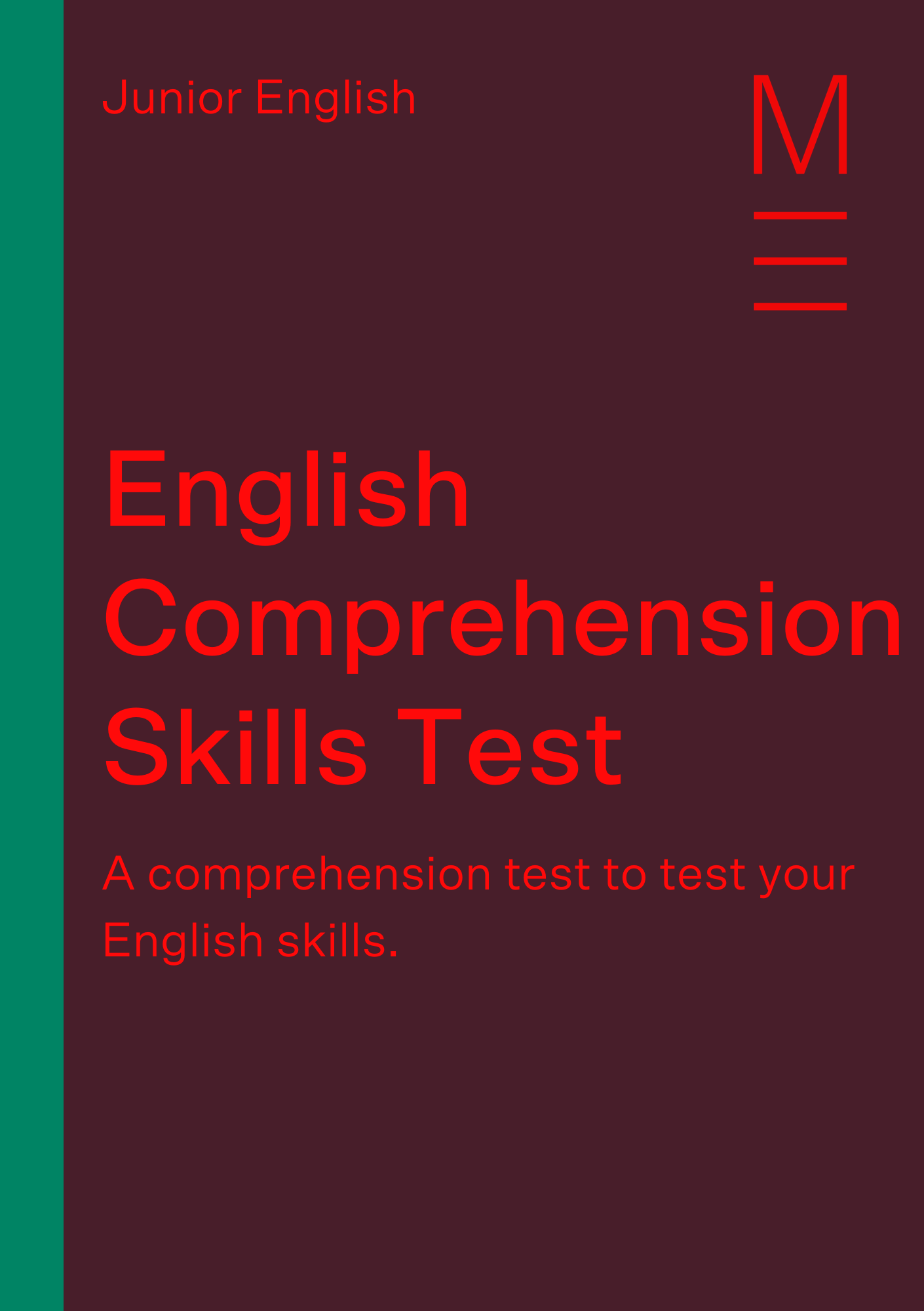Welcome to Matrix Education
To ensure we are showing you the most relevant content, please select your location below.
Select a year to see courses
Learn online or on-campus during the term or school holidays
Learn online or on-campus during the term or school holidays
Learn online or on-campus during the term or school holidays
Learn online or on-campus during the term or school holidays
Learn online or on-campus during the term or school holidays
Learn online or on-campus during the term or school holidays
Learn online or on-campus during the term or school holidays
Get HSC Trial exam ready in just a week
Get HSC exam ready in just a week
Select a year to see available courses
Science guides to help you get ahead
Science guides to help you get ahead

Do you have strong comprehension skills? Comprehension is an essential skill needed to succeed in High School English. Let’s see the Year 7 & 8 comprehension skills you need to develop.
In this part of our Years 7 & 8 English Study Guide, we will define what comprehension is, explain the importance of strong comprehension skills and provide you with strategies to improve these skills.
Test and improve your reading and thinking skills with this practice test - answers included! Fill out your details below to get this resource emailed to you. "*" indicates required fields
Download your free English Comprehension Skills test

Download your free English Comprehension Skills test
Comprehension is when you read a text and understand its plots, events and characters.
In school, students are given a set of questions to test their understanding of a text.
Without comprehension, you cannot understand what is happening in the text.
A student with strong comprehension skills can easily determine the plot, character’s personalities and events of the text.
They can also understand the meaning of these events and figure out the text’s message(s).
This skill is necessary because it acts as a stepping stone to higher order comprehension; analysing texts.
In high school, students are expected to analyse texts and write about them. However, you cannot start unpacking a text, if you don’t understand what is happening in it. This is why strong comprehension skills are necessary.
Comprehension involves reading, understanding a text, and answering a set of questions about it. Sometimes, the answers are directly given in the text and other times, you have to infer the answer from the clues given to you.
It might seem challenging, but it is a very straight-forward process:
Some students may struggle with comprehending texts, whilst others are quite comfortable with it. Either way, there is always room to further improve these skills.
It is very important that Years 7 and 8 students gain this skill early on or they will struggle in their high school years.
Understanding texts is knowing the plot and events, who the characters are and what is the main message. You cannot analyse a text if you don’t understand what is happening first.
People tend to read passively. This means that they only read the words of the text to finish it. They don’t try to fully understand the text and they don’t question what is really happening in it.
However, to improve comprehension skills, you need to actively read.
Active reading is when you engage with your text as you read.
That is why Matrix students are encouraged to actively read and are given lots of comprehension practice to improve their understanding of texts.
These are a few strategies that you can implement for your child:
1. Visualising
This is when you form images in your head as you read, like a movie.
Instead of just ‘reading the words’, you need to deliberately take it in to understand what is happening.
You will feel more connected to the characters, settings and engage with the plot. As a result, you will better understand the text; plot, characters and meaning.
2. Inferring
The text will not explicitly give you all the answers. Students will usually come across parts in the text where they have to assume the determine the underlying message. This is inferring.
It is important to note that inferring is not ‘guessing’!
You have to take the available information given to you, combine the ideas and come up with a reasonable answer.
This is a useful skill to better understand texts because you are able to create meaning and fill in the missing gaps.
3. Predicting
This is when you assume what will happen next. When you read, you begin to link the events in the text with your current knowledge.
For example, when the character opens a creaking door and walks into a cold and dark house at midnight, you know that something bad is going to happen.
This is because your mind automatically links the text with your knowledge and predict what will happen next.
This is important because it promotes engagement with your text, especially when you can confirm or reject your predictions.
4. Asking and answering questions
As you read, continually ask yourself questions like “why is this happening?” or “what is the main idea here?”.
This means that you are actively thinking about the meaning of the text and not just simply reading the words.
You will begin to realise what is important in the text and slowly summarise the events.
5. Making connections
When you read, it is important that you also make connections to your current knowledge. This includes your personal life, something learned in school or even something that you’ve read before.
You will be able to better understand the text because you have ground knowledge to base your reading upon.
For example, your knowledge about the Elizabethan era will help you better understand why certain events happen in Shakespeare’s plays.
These are all steps that your child can take to actively read. Being able to find the underlying meanings and messages in the text and knowing the plots, characters and events is an extremely important part of developing strong comprehension skills.
Remember, if you come across a difficult section, you can always re-read it or even try reading it out loud. These are ways that can help you better understand your text.
Retention is when you absorb the information you have read and remember it.
You need to be able to remember details about the text to answer questions about it; both short answer and essay questions.
Being able to recall texts means that you can remember what happened at the beginning of a long novel.
But more importantly…
It allows you to draw links within the text, explore ideas, and build your own arguments without having to continually look at the text.
If you remember the main ideas and themes in a text, you are then able to apply it to different situations, which is especially needed in high school English.
There are a few steps that your child can take to improve their retention skills:
1. Visualising
As we discussed earlier, visualising is when you create pictures in your head as you read. This not only allows for a better understanding of the text, but it also helps you retain it.
Most people remember images better than they do words.
So, when you consciously try to create images and give the words meaning, you are actively engaging your brain.
2. Summarising
When you finish reading your text or a chapter of your text, try to summarise what happened.
Take note of the plot progression, events, main ideas and important points. Make connections between themes, ideas and plot. But also delete unimportant details.
This means that you are not trying to remember every small detail about your text.
You will only have to remember the important aspects of your text.
You can do this in your head for shorter texts. But for longer ones, like novels, it is better if you write it out or draw a mindmap.
As a result, you can easily answer questions with your summaries.
3. Making connections
As we’ve seen, making connections is when you link the events in the text to your current knowledge.
This improves your retention of the text because you are building off a foundation of knowledge instead of creating a new one.
As you read, you think about how the new knowledge supports, extends or conflict with your current knowledge or perspective.
Certain words or phrases can trigger ideas that relate to parts of the book.
This means, that by building a solid foundation of the ideas and meanings from your text, you are able to better recall them for the future because it isn’t entirely brand new.
These are a few steps that you can show your child to improve their retention of the texts they read. Remember, being able to recall what you have read is especially important
Now that you know the skills that your child needs to develop their comprehension, here are a few strategies that you can implement to make it happen:
1. Encourage them to read more
When your child reads more, they are given more opportunities to develop their comprehension skills and increase their vocabulary and knowledge.
They should be reading at least 20 minutes every day for leisure.
It should be a fun experience.
2. Read the text with them and discuss it together
This can make the reading experience more fun for your child, especially when they are struggling with comprehension.
When you approach a difficult part, discuss it together to try to work out what it means.
Make sure you ask questions about the themes, messages and events in the text. You can even get them to draw out what happens in the text if they are a visual learner.
When you talk to others about your text, you get a chance to develop new insight, extend your perspectives and even defend your beliefs and perspectives.
This is all very useful for your child to form arguments about the text, something that is necessary for high school English.
Comprehension is the understanding of a text and its meaning. It acts as a stepping stone to textual analysis. This is why it is so important to develop strong comprehension skills early on.
Textual analysis is more complicated because it requires you to pick the text apart and search for meaning.
This means that you have to look at the techniques used, the form and style and see how it all creates meaning. You need to be able to ask why the composer chose to do something and how does that help develop their message.
And you also need to interpret the text, play with abstract ideas, and provide your own perspectives and arguments about it.
© Matrix Education and www.matrix.edu.au, 2025. Unauthorised use and/or duplication of this material without express and written permission from this site’s author and/or owner is strictly prohibited. Excerpts and links may be used, provided that full and clear credit is given to Matrix Education and www.matrix.edu.au with appropriate and specific direction to the original content.